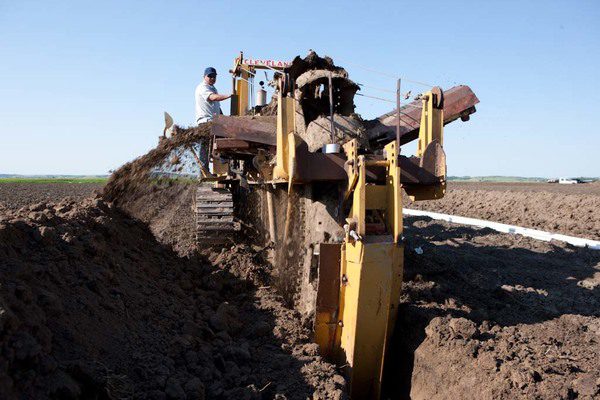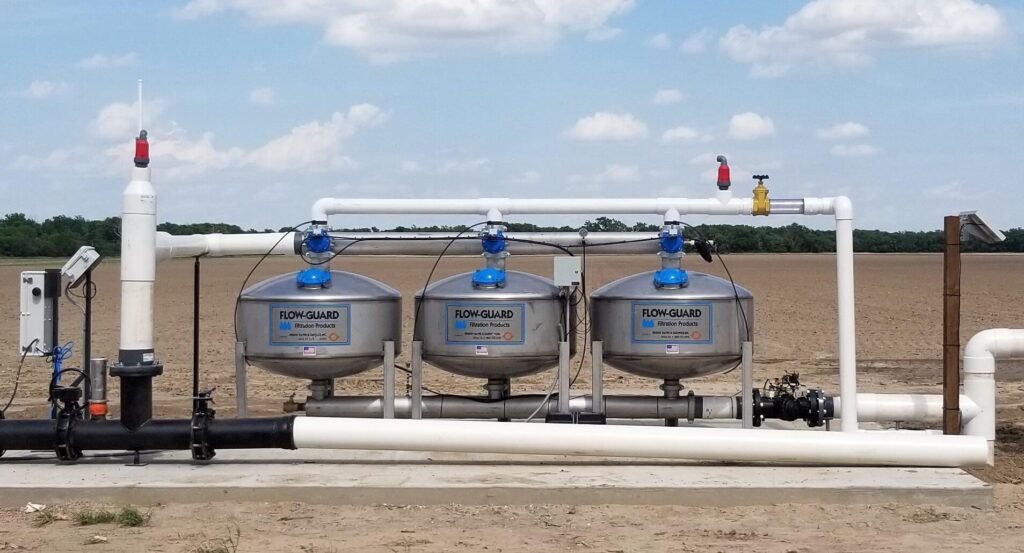Subsurface Drip Irrigation Costs Explained: From Equipment to Installation
Subsurface Drip Irrigation Costs Explained: From Equipment to Installation
When it comes to modern farming, efficiency isn’t optional. Water scarcity, rising operational expenses, and the demand for higher yields are pushing growers to rethink how they irrigate. Subsurface drip irrigation (SDI) has emerged as a solution that addresses these challenges head-on, delivering water and nutrients directly to the root zone beneath the soil surface.
But what does it actually cost to install and maintain an SDI system? And more importantly, is the investment worth it?
Understanding the full cost picture is essential before committing to SDI. From the initial equipment purchases to installation labor and long-term maintenance, multiple variables come into play. This guide breaks down every aspect of SDI costs so you can make an informed decision for your operation. Whether you’re managing a small specialty crop farm or a large-scale commercial operation, knowing what to expect financially will help you plan smarter and farm more profitably.
What Is Subsurface Drip Irrigation?
Subsurface drip irrigation is an irrigation method where water is delivered directly to the root zone of plants through tubing buried several inches below the soil surface. Unlike surface drip systems or traditional sprinklers, SDI keeps water hidden underground, reducing evaporation and runoff while maximizing efficiency.
SDI systems consist of drip tape or tubing with evenly spaced emitters that release water slowly and consistently. This controlled delivery ensures that crops receive the moisture they need without waste. The system can also be used to deliver fertilizers and other nutrients directly to the roots, a process known as fertigation.
The benefits are compelling. SDI conserves water by minimizing evaporation and runoff. It reduces weed growth since the soil surface stays dry. It also allows for uniform water distribution across the field, which can lead to more consistent crop quality and higher yields. For growers looking to optimize resource use and improve crop performance, SDI offers a modern, sustainable approach.
Western Irrigation specializes in designing and installing SDI systems tailored to the unique needs of each farm. With expertise in a wide range of crops and soil types, they help growers transition to more efficient irrigation practices.

Factors Affecting SDI Costs
The cost of an SDI system isn’t one-size-fits-all. Several factors influence the final price tag, and understanding these variables will help you budget more accurately.
Land Size and Layout
The size of your field is the most obvious cost driver. Larger acreages require more drip tape, more labor for installation, and potentially more complex distribution systems. But it’s not just about total acres. The shape and topography of your land also matter. Irregular field shapes or uneven terrain can complicate installation, requiring additional planning and equipment to ensure proper water distribution.
Soil Type
Soil characteristics play a critical role in SDI system design. Sandy soils drain quickly and may require closer emitter spacing or more frequent irrigation cycles. Clay soils hold moisture longer but can suffer from poor drainage if not managed properly. Your soil type will determine the depth at which drip lines are buried, the spacing between lines, and the flow rate of emitters. These factors all influence material costs and installation complexity.
Crop Type
Different crops have different water and nutrient needs. Row crops like corn or cotton may require wider line spacing compared to specialty crops like vegetables or berries. Perennial crops such as vineyards or orchards often need more durable systems designed to last multiple growing seasons. The crop you’re growing will dictate system specifications, which in turn affects costs.
Water Source and Quality
Where your water comes from and what’s in it can significantly impact SDI costs. If your water source contains high levels of sediment, minerals, or organic matter, you’ll need a more robust filtration system to prevent emitter clogging. Poor water quality can also shorten the lifespan of system components, leading to higher long-term costs. On the other hand, access to clean, reliable water can reduce both upfront and operational expenses.
SDI Equipment Costs
The heart of any SDI system is its equipment. Here’s a breakdown of the major components and their associated costs.
Drip Tape or Tubing
Drip tape is the primary delivery mechanism for water and nutrients. It typically costs between $0.03 and $0.15 per foot, depending on wall thickness, emitter spacing, and flow rate. Thinner-walled tape is less expensive but may not last as long, especially in rocky soils. Thicker-walled tubing is more durable and suited for permanent installations.
Lifespan is an important consideration. Standard drip tape may last one to three seasons, while premium tubing can function effectively for five to ten years or more. Choosing the right product depends on your crop rotation, soil conditions, and long-term farming plans.
Filtration System
A reliable filtration system is essential for preventing clogs and maintaining consistent water flow. Options include screen filters, disk filters, and media filters, each with varying price points and maintenance requirements.
Screen filters are the most affordable, typically ranging from $100 to $500. Disk filters offer better filtration and cost between $300 and $1,500. Media filters, which use sand or other materials to remove particles, are the most expensive, often costing $1,000 to $5,000 or more. The choice depends on your water quality and the level of filtration required.
Pumps and Injectors
Pumps are necessary if your water source doesn’t provide sufficient pressure. Costs vary widely based on horsepower, flow rate, and energy source. A small electric pump may cost $500 to $2,000, while larger systems can exceed $10,000.
Injectors allow you to introduce fertilizers, acids, or other chemicals into the irrigation system. Venturi injectors are inexpensive, usually under $200, but have limited capacity. Piston or diaphragm injectors offer more precision and can handle larger volumes, costing between $500 and $3,000.
Automation and Control Systems
Automation can dramatically reduce labor costs and improve irrigation precision. Basic timers cost as little as $50, while advanced controllers with soil moisture sensors, weather data integration, and remote monitoring capabilities can range from $500 to $5,000 or more.
Investing in automation makes sense if you’re managing a large operation or want to optimize water and nutrient delivery. Modern systems can be controlled via smartphone, allowing you to adjust irrigation schedules from anywhere.

SDI Installation Costs
Equipment is only part of the equation. Installation costs can be substantial, depending on the complexity of your system and the condition of your land.
Site Preparation
Before installation, your field may need clearing, leveling, or soil testing. Clearing vegetation or rocks can cost $100 to $500 per acre. Leveling ensures uniform water distribution and may add $200 to $1,000 per acre. Soil testing helps determine optimal drip line depth and spacing, typically costing $50 to $200 per test.
Trenching and Burying
Burying drip lines requires specialized equipment. Costs depend on soil conditions, line depth, and field size. On average, trenching and burying can range from $300 to $1,500 per acre. Rocky or compacted soils increase costs, as do deeper installations.
Connecting to Water Source
Connecting the SDI system to your water source involves installing mainlines, submains, and valves. Costs vary based on distance, pipe diameter, and pressure requirements. Budget $500 to $3,000 for this phase, depending on system complexity.
System Testing and Calibration
Once installed, the system must be tested and calibrated to ensure proper function. This includes checking for leaks, verifying flow rates, and adjusting emitter output. Professional testing typically costs $200 to $1,000, depending on system size.
Long-Term Operational Costs
SDI systems require ongoing maintenance and operational expenses. Planning for these costs ensures your system remains efficient and productive.
Maintenance
Regular maintenance includes flushing lines, inspecting emitters, and replacing damaged components. Annual maintenance costs typically range from $50 to $200 per acre. Neglecting maintenance can lead to clogs, leaks, and reduced system performance.
Energy
If your system relies on pumps, energy costs can add up. Electricity or fuel expenses depend on pump size, operating hours, and local utility rates. Efficient pump selection and proper system design can minimize energy consumption.
Water
Water costs vary by region and source. If you’re drawing from a municipal supply or paying for groundwater rights, factor these expenses into your budget. SDI systems reduce water usage compared to traditional methods, which can offset costs over time.
Replacement Parts
Even with proper maintenance, components will eventually wear out. Drip tape, filters, and valves may need replacement every few years. Setting aside funds for replacement parts ensures uninterrupted operation.

Cost-Benefit Analysis of SDI
While SDI systems require upfront investment, the long-term benefits often justify the costs.
Increased Crop Yields
By delivering water and nutrients directly to the root zone, SDI promotes healthier plants and more consistent growth. Many growers report yield increases of 10% to 30% compared to surface irrigation methods. Higher yields translate to greater revenue, improving your return on investment.
Water Savings
SDI systems use 20% to 50% less water than traditional irrigation methods. This reduction not only lowers water costs but also conserves a precious resource. In regions facing water restrictions, SDI can be a game-changer.
Reduced Labor Costs
Automation reduces the need for manual irrigation management. Instead of spending hours adjusting sprinklers or monitoring water flow, you can focus on other aspects of farm management. Over time, labor savings can offset installation costs.
Government Incentives and Rebates
Many government programs offer financial incentives for adopting water-efficient irrigation practices. Grants, rebates, and cost-share programs can significantly reduce your out-of-pocket expenses. Check with your local agricultural extension office or water district to learn about available programs.
Making SDI Work for Your Farm
Subsurface drip irrigation (SDI) is a smart investment for growers, offering water savings, higher yields, and reduced labor. However, success requires proper planning, quality equipment, and expert installation. Factors like soil type, crop selection, water quality, and field layout all play a key role in system design and costs.
Western Irrigation specializes in tailored SDI solutions to maximize efficiency and profitability. Whether you’re new to SDI or upgrading an existing system, their team provides expert guidance every step of the way. Contact Western Irrigation to see how SDI can transform your farm.
